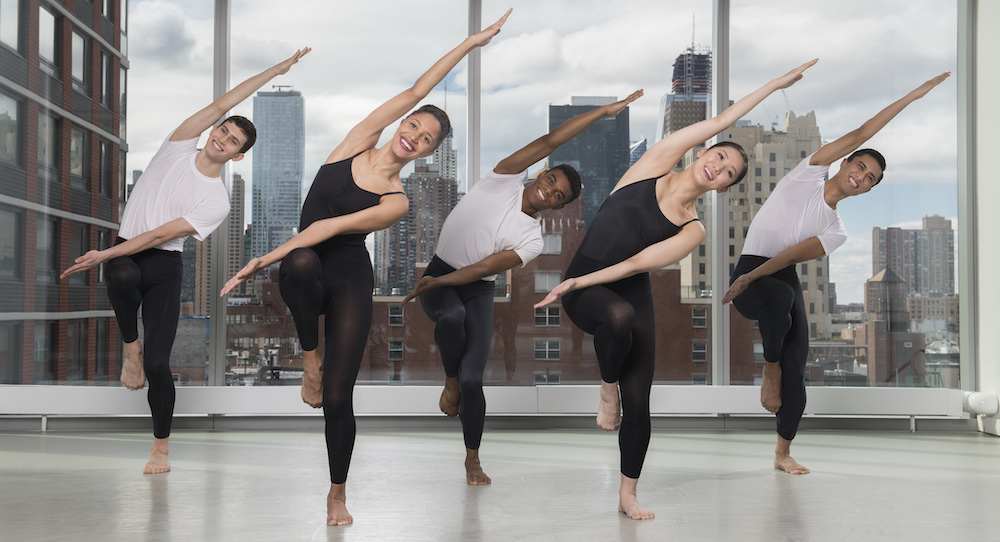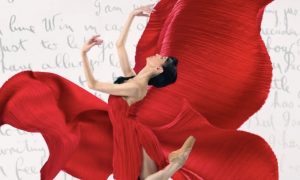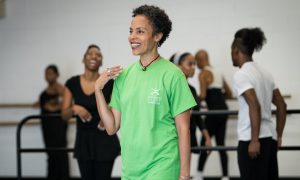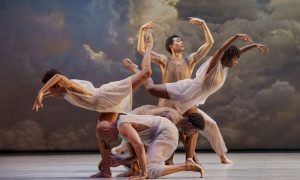Dancing costs money. Well, to get up and move is free, but to take classes, buy required clothing and shoes, order recital costumes, and more certainly isn’t. To have a dream to formally train in dance and not have the money to do so can be a heartbreaking experience. The dance world, and the world at large, could have also missed out on the offerings of a true visionary. Additionally, given the gifts of dance training for individuals as well as larger communities, making dance more widely accessible to those of all socioeconomic classes can be a positive equalizing force out there in the world.
Dance Informa speaks with representatives from three non-profit organizations working on widening access to formal dance training amongst all socioeconomic classes – Tina Banchero, artistic director of The Gabriella Foundation; Melanie Person, co-director of The Ailey School; and Juliana Abel, co-founder of Pair2Share.
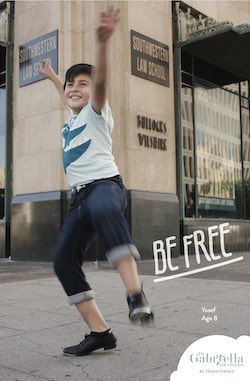
Photo courtesy of The Gabriella Foundation.
The Gabriella Foundation is a 501c3 non-profit organization that hosts everybody dance!, a program offering free and low-cost dance education in four main studio locations and schools in Greater Los Angeles. Studio-based classes – including tap, jazz, ballet, breaking, modern and hip hop, that run from Monday to Saturday – cost $2 per class, and serve over 900 students. School-based classes serve 3,663 students at 16 schools in under-resourced areas of the city, and are funded through grants and LAUSD (Los Angeles Unified School District) appropriations. Banchero describes essential goals of the program to “help [students] to acquire dance skills, knowledge and self-discipline; strengthen their life skills; develop in them a love and appreciation of dance and the arts; and support a culture of empathy and inclusion.”
Concerning The Ailey School’s renowned Scholarship Program, Person explains that “The Ailey School is a world-renowned educational institution dedicated to the highest level of training while also remaining the most diverse dance academy in the nation,” and how the school’s “financial aid program benefits all students at the school by making it possible for highly talented young dancers to pursue professional training to which they might not otherwise have access.” She elaborates that the dance training most often needed for building a professional career starts early, and is therefore quite expensive – from classes, to clothing and shoes, to travel and lodging in high-cost dance centers such as New York City.
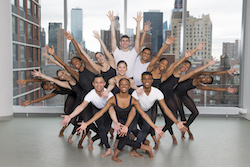
Students from The Ailey School Professional Division. Photo by Nir Arieli.
As such, The Ailey School has pledged to offer 450 students some form of scholarship aid – including tuition assistance and housing stipends – 75 percent of which are awarded to students of color, Person says. Students are recruited from all over the world and at NYC performing arts-focused high schools (such as the Professional Performing Arts School) through three auditions annually, with financial aid recipients chosen by the audition panel (including faculty members and The Ailey School’s Co-Directors Tracy Inman and Person).
“Pair2Share started when I was packing up to move houses, realized how many dance shoes I had grown out of that looked untouched, and could not find any kind of organization to send them to,” Abel recalls. “As a dancer for 10 years, at the time, it seemed like a no-brainer to start a project to give back to a community that had already given me so much.” She explains that from there, she began researching non-profit dance organizations and saw an unmet need for an organization to help provide dance shoes for dancers in need. A symbolic meaning grew from there, under the slogan “Share your sole” – Abel and her Pair2Share Co-Founders, Meriah Grove and Mekayla Murphy, realized that there’s something truly special about sharing your journey in dance, through your shoes, with other dancers.

Pair2Share Co-Founders Juliana Abela and Meriah Grove.
“Dance is an art form that brings people together, so it seems right to share our ‘instruments’ when we can and when others may need them to continue doing what they love,” Abel affirms, adding that, at first, Pair2Share began with “the intention to donate new and gently used dance shoes to dance organizations or programs that serve students of lower socioeconomic status.” Later on, however, the organization changed policies to offer collected shoes to anyone requesting them. “The idea of this is a pay-it-forward kind of deal. We will serve anyone who needs a pair of shoes with the hopes that they will continue the circle and later give a pair back,” Abel explains.
In that same spirit of inclusiveness, Banchero believes that all people should have the opportunity of access to dance education, for its power to transform lives – how “it increases self-esteem, body awareness, teamwork skills and self discipline.” She adds that many everybody dance! students claim to be too busy to get involved with problematic peers and activities (such as addictive game and social media use, drug use and early sexual activity) after school. A good deal of research backs this up, reinforcing the importance of keeping students busy after school to avoid risky behaviors, Banchero cites. “Communities with fewer resources often struggle to afford high quality after-school programming for their youth, and we believe that our program is essential in off-setting undesirable behaviors in low-resource pre-teens and teens while also offering creative expression, self-esteem and physical well-being.”
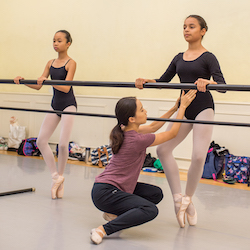
The Gabriella Foundation. Photo by Charles-Ryan Barber.
Abel describes her greater realization of such whole-person benefits of dancing, at all ages, when she researched to build her organization. “The shoes became the focus of Pair2Share because we realized that if we could start people off with a basic ‘tool’ to start dancing, we could inspire people to use dance as their outlet – a place to go after school, be a part of a community and grow as individuals,” Abel explains. She goes on to describe how many schools serving predominantly low socioeconomic status students don’t require dance shoes, from understanding of the financial burden requiring shoes might place on those students’ families. On the other hand, many schools serve students of all socioeconomic levels. “Those are the studios that I wanted to serve with Pair2Share,” Abel explains, “in order to make it so all students could participate in all classes without the constant reminder that they are missing something.”
To Abel, dance shouldn’t be something only for the “well-off”, in large part because potential greatness might never be allowed to flourish. “Expanding the accessibility to dance makes it possible to find the future ‘big names’ of the dance world who may come from any background,” she asserts. Person expresses a similar view, and states that “scholarships are crucial in making dance accessible for everyone and ensuring that it is not just an art form for the elite; it’s about providing an opportunity.” She expresses gratitude for various generous donors and endowments allowing for “annual or permanently endowed named scholarships that are made available to talented students with need.” Banchero points to how diversity, which includes socioeconomic diversity, is becoming more and more of a priority for dance companies and commercial dance entities, which “allows for a greater cross-section of the public to relate to the dance they are viewing and for more people to be represented in the art form,” she says. Banchero describes a belief at her organization that strong representation benefits dance as an art form “because it encourages multiple perspectives.”
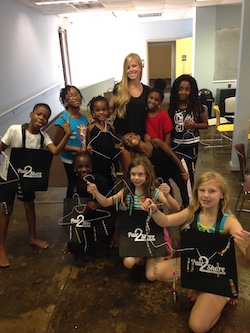
Dance Camp at Moving in the Spirit. Photo courtesy of Pair2Share.
Regarding meaningful accomplishments of her organization, Abel has “definitely been the most proud when hearing stories from people who have received the shoes about what they will do with them!” She describes a particularly meaningful story of getting connected with a young dance student in Missouri, through Facebook, whose family was in need of help keeping up with her dance shoe needs as she grew – and who also agreed to exchange the shoes she’d grown out of. After this student received her new shoes, a message of gratitude from the young dancer and a picture of her with her new shoes, made it all the sweeter. Moving forward, Abel hopes to maintain consistent involvement with Pair2Share amidst other obligations in her life, as well as to give “young dancers the opportunity to give back what has fed their passion for their art form, and [to] help them grow as philanthropic individuals.”
Person says she is “proud that graduates of The Ailey School are versatile and diverse in so many ways, with successes and accomplishments from Alvin Ailey American Dance Theater to concert dance to Broadway, from medicine to law to politics. They’ve made a strong impact in the world of dance and beyond.” Another significant accomplishment of the scholarship program is that a notable percentage of members of the professional company were once scholarship recipients. Moving forward, program administrators hope to refine the recruitment model for discovering nationwide talent.
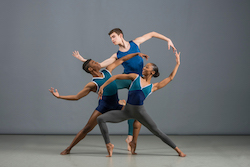
Students from The Ailey School Professional Division. Photo by Nir Arieli.
Banchero is incredibly pleased that everybody dance! has “grown from 35 served to 4,577 served a year,” and that second- and third-generation students are in those ranks. “Our goal is to keep expanding and to have lasting impact in the communities we serve,” such as through securing funding and initiating class schedules at a few sites where relationships are already in place, she shares.
Such goals reached or not reached, the accomplishments, values and visions behind these organizations’ broadening of access to dance to those from all socioeconomic classes can only brighten individual lives, larger communities and dance as an art form.
By Kathryn Boland of Dance Informa.


